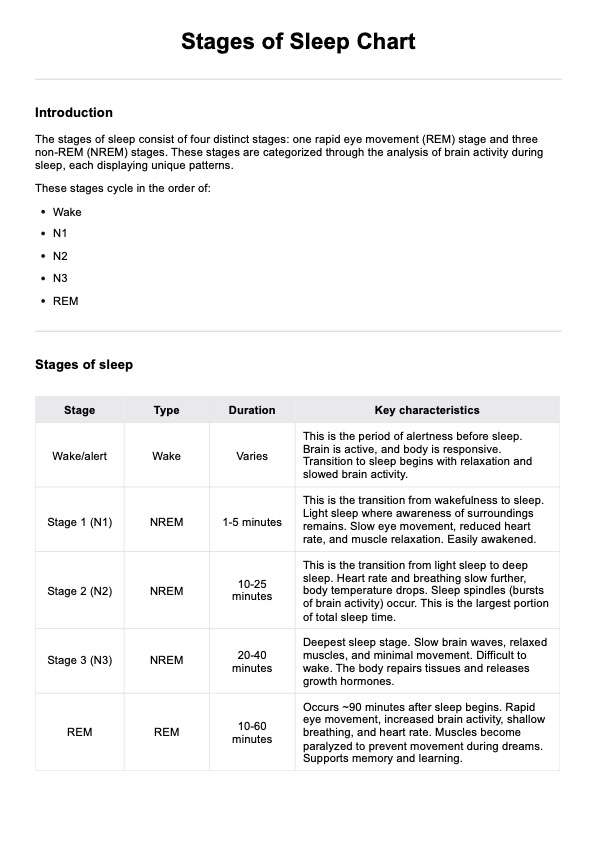The five sleep stages include wake (which is an alert state before sleep and is not usually considered as a stage of sleep), N1, N2, and N3 (non-REM sleep), and REM sleep. These stages cycle throughout the night, with each playing a distinct role in brain function, muscle recovery, and overall sleep quality.

Stages of Sleep Chart
Access Carepatron's free Stages of Sleep Chart PDF chart and enhance clinical understanding of sleep cycles with detailed examples for patient assessments.
Stages of Sleep Chart Template
Commonly asked questions
A healthy adult should spend 50-60% of sleep in N2, 20-25% in REM sleep, and 10-20% in deep sleep (N3). The balance of these stages is essential for cognitive function, memory consolidation, and physical restoration.
Deep sleep (N3) is crucial for physical recovery, immune function, and cellular repair, while REM sleep supports memory, learning, and emotional regulation. Both are essential, but a lack of either can disrupt overall health and cognitive performance.
EHR and practice management software
Get started for free
*No credit card required
Free
$0/usd
Unlimited clients
Telehealth
1GB of storage
Client portal text
Automated billing and online payments











